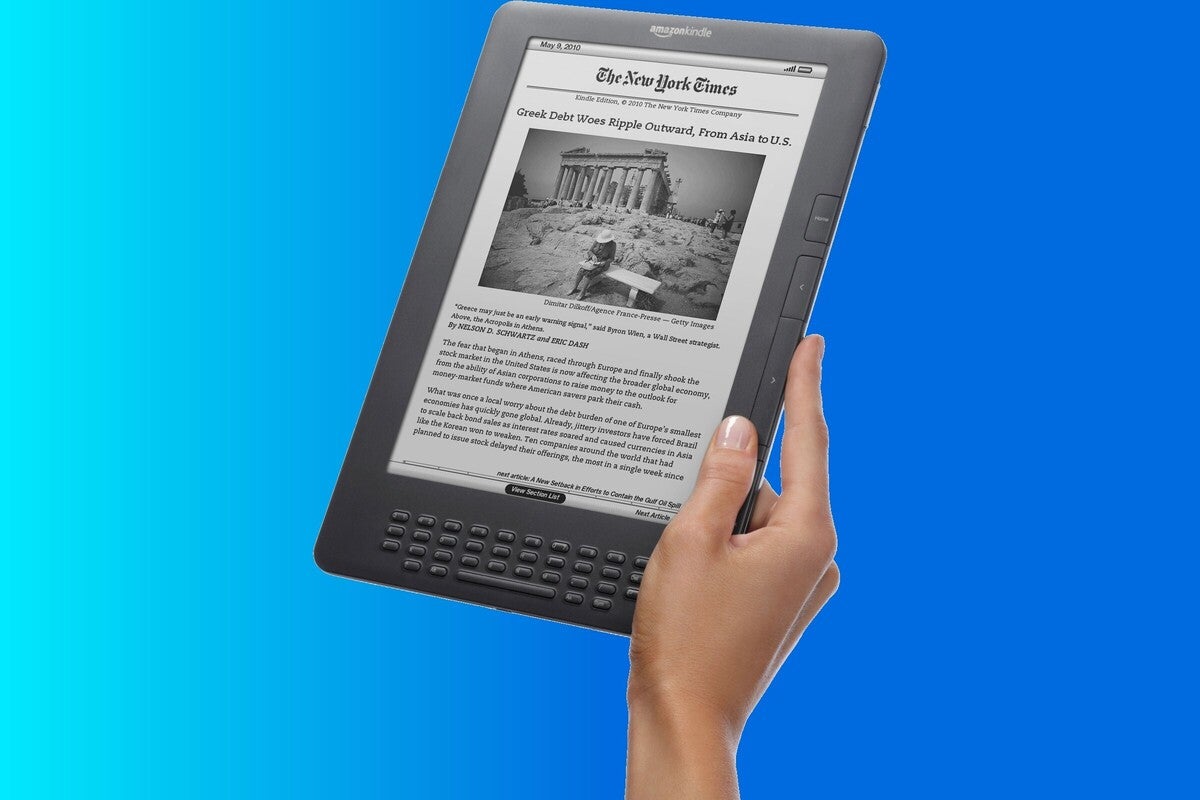They’re collateral damage from the phaseout of the 2G and 3G connections they used.
Amazon
Today’s Best Tech Deals
Picked by PCWorld’s Editors
Top Deals On Great Products
Picked by Techconnect’s Editors
Amazon’s oldest Kindles are being cut off from the internet. But don’t blame Amazon—these e-readers are collateral damage in the phaseout of 2G and 3G cellular service.
The first two generations of Kindle e-readers used a cellular antenna to connect to the internet for downloading content. Specifically, the original Kindle (1st Generation) from 2007; the Kindle (2nd Generation) from 2009; and the Kindle DX (2nd Generation), also from 2009, all had 2G or 3G cellular connectivity.
Check out PCWorld’s ongoing coverage of Kindle reviews and news.
That’s a problem, because the cellular networks of that era are shutting down. “Starting in December 2021,” Amazon explained in a statement, “mobile network operators in the U.S. are turning off their 2G and 3G networks, which means customers with Kindle 1st/2nd Generation and Kindle DX 2nd Generation (2G/3G-only devices released between 2007 and 2009) will be unable to download content wirelessly.”
So you can just hop onto Wi-Fi instead, right? Wrong! As Amazon explains in its 2G and 3G E-Reader Network Support FAQ, these early models have no other way to connect to a network. “Kindle devices that require cellular connectivity through 2G or 3G networks for internet connectivity will be unable to connect to the internet after these networks are discontinued.”
Kindle users who still have one of these older readers will still be able to use the content that is already downloaded to the device. They just won’t be able to download more.
All other, younger Kindle models remain in the clear, because if nothing else they have Wi-Fi connectivity. “Kindle devices launched between 2010 and 2016 will continue to be able to connect to the internet and Kindle Store using Wi-Fi only,” Amazon continued. “This includes Kindle Keyboard 3rd Generation, Kindle Touch 4th Generation, Kindle Paperwhite 5th/6th/7th Generation, Kindle Voyage 7th Generation, and Kindle Oasis 8th Generation.” Amazon even has a page that helps you confirm which Kindle you have.
The company’s statement further reassures that “Kindle devices released after 2016 with cellular connectivity use 4G and are not impacted.” However, it’s reasonable to expect that whenever 4G is phased out, those Kindle devices will lose their cell service, too.
Amazon is offering some consolation to affected 1st- and 2nd-generation Kindle users in the form of discounts and offers for new Kindles. “We have always taken pride in seeing customers reading on our earliest devices, and will be offering trade-in options and special offers,” the company concluded in its statement. A PCWorld staffer who still has an early Kindle received an email with discount and credit offers on Kindle products.
Note: When you purchase something after clicking links in our articles, we may earn a small commission. Read our affiliate link policy for more details.
Melissa Riofrio spent her formative journalistic years reviewing some of the biggest iron at PCWorld–desktops, laptops, storage, printers. As PCWorld’s Executive Editor she leads PCWorld’s content direction and covers productivity laptops and Chromebooks.


